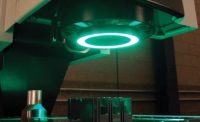|
TECH TIPS
|
Test & Inspection
Boost Product Reliability with Environmental Stress Screening
Environmental stress screening is a series of intensified tests to identify potential manufacturing flaws.


This shows the vibration table in the vertical position in the background. The slip table is in the foreground. It is a metal plate on a granite table which has lubricating oil continuously pumped between the plate and the granite to minimize friction. Source: Trace Laboratories

The use of HALT testing can significantly reduce the random failure rate of a product during its useful life. These are images of a HALT chamber. Source: Trace Laboratories


A photo of a thermal cycling chamber appears here. Typical volume of these chambers is 9 cubic feet. Source: Trace Laboratories

This is a typical thermal shock chamber. The typical volume of the chamber is 1.8 cubic feet. Source: Trace Laboratories
